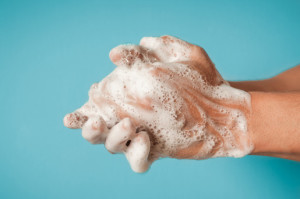Safety First: Tips For Personal Safety
Stitches can cost up to $2,000, mending a laceration can cost up to $10,000 and repairing a severed tendon can exceed $10,000. These are all injuries that can happen in the workplace, especially in a warehouse. However, they can possibly be prevented if employees know and follow the proper safety procedures. It is important to have safety procedures in place for any company, and make sure that employees understand and adhere to them. One major part of practicing safety is wearing the appropriate equipment, known as Personal Protection Equipment (PPE). The most common examples of PPE are eye wear, gloves, mask and apron.
Eye wear is an extremely important part of personal safety because the eyes are one of the most sensitive parts of the body. Not to mention they can also be seriously expensive injuries to treat. According to an article on CleanLink, “The average cost associated with an eye injury is nearly $1,500 but more serious injuries can cost as much as $300,000 per occurrence in lost production time, medical expenses, and insurance costs.” $300,000 is a serious amount of dough, but luckily most eye injuries are preventable with proper safety gear like eye wear. Keep in mind that in order for eye wear to be effective in preventing injury, it needs to be OSHA and ANSI approved. You must also be sure that eye wear is appropriate for the hazards of the environment, such as handling chemicals or shielding against projectiles such as wood chips. It is recommended to use eye wear made of polycarbonate, with anti-fog and anti-scratch coatings, according to Jeffrey Gayer, Vice President of Product Development & Marketing for Impact Products, LLC. Gayer also says that these features will help ensure that employees actually use the eye wear. Glasses that scratch and fog aren’t going to be very convenient to wear, causing employees to neglect wearing them. Another way to ensure employees actually use the eye wear is to make sure it is comfortable and stylish. Uncomfortable eye wear is bound to be abhorred and ignored, and although it may not seem like a priority, providing eye wear that is stylish can help ensure it is used.
The next three items of personal protection equipment go together like peas and carrots, as Forrest Gump would say. A mask, apron and gloves can all help protect you from harmful substances such as chemical back splash or infectious materials. When it comes to choosing the right mask, apron and gloves, a lot of the same tips for choosing eye wear still apply. It is important to make sure the equipment meets the appropriate standards for the job. If the job involves handling food, then quality latex or nitrile gloves are necessary to not only maintain employee safety but also the safety of the consumer. If chemicals, especially ones that can irritate skin, are involved in the job, it is very important to use gloves that will keep the chemical from contacting skin, an apron that can protect from chemical back splash, and a mask to ventilate any potentially harmful vapors. All three of these materials can also provide protection from infectious materials, such as linens or surfaces contaminated with bloodborne pathogens. Gloves, a mask and apron can prevent infectious materials from coming in contact with the skin or entering through the air.
Remember, there will always be risk. That doesn’t mean that risk can’t be minimized by using the proper equipment and procedures. Understand the risks of the job and be prepared for them. Employee injuries can be expensive, but they can also be prevented. As an employee, be sure to understand the proper safety procedures of your employer and always follow them. As an employer, be sure that employees are always kept up to date on proper safety procedures and are provided with quality personal protection equipment for the job. If you would like help making sure you have proper PPE in place, reach out and we can help! You can also check out the Personal Protection Equipment offered at Weiss Bros. here.
Reference: “Simple Safety Steps That Minimize Injuries.” CleanLink. https://www.cleanlink.com/news/article/Simple-Safety-Steps-That-Minimize-Injuries–19400. Accessed 6 April 2018.





